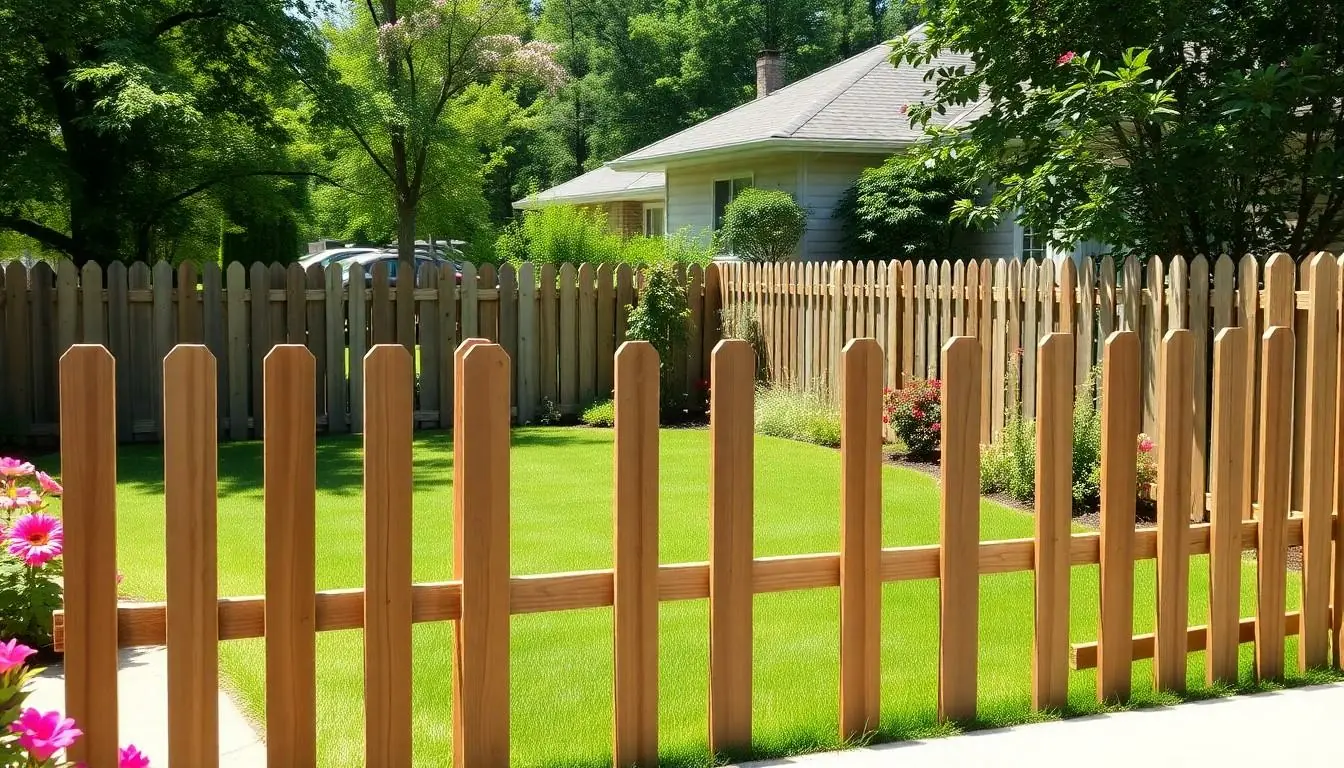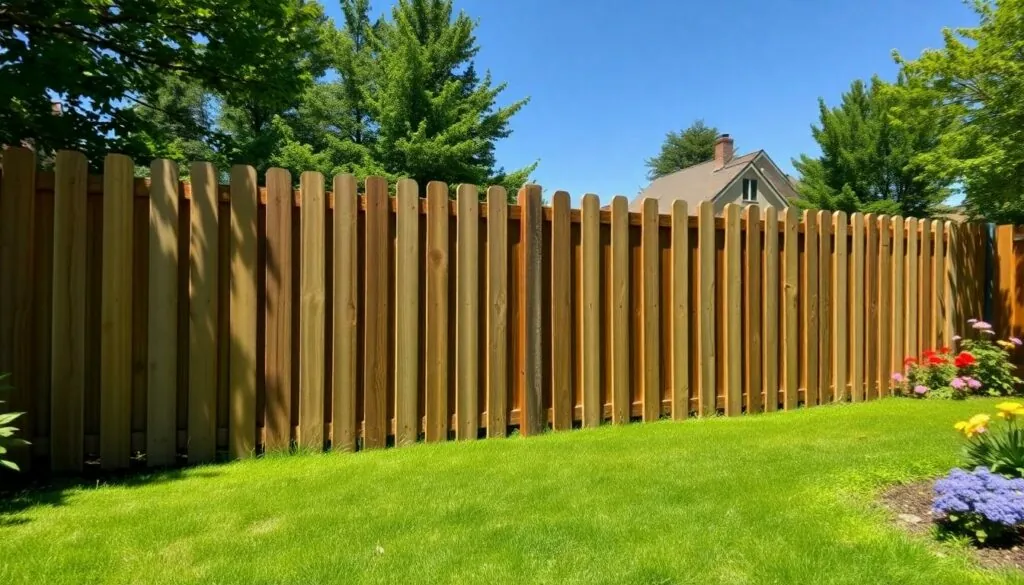Table of Contents
ToggleWhen it comes to home insurance, most people think about protecting their prized possessions inside the house. But what about that fence that’s valiantly holding back the neighbor’s overly enthusiastic dog? Does home insurance cover fences? Spoiler alert: it’s a bit more complicated than just a yes or no.
Fences can be the unsung heroes of a property, providing security and curb appeal. However, when disaster strikes—whether it’s a rogue tree or a mischievous raccoon—homeowners might find themselves scratching their heads over coverage. Understanding the ins and outs of your policy can save you from a costly surprise. So let’s dive into the world of home insurance and uncover the truth about whether that trusty fence is really covered.
Overview of Home Insurance
Home insurance provides essential protection for property and belongings against various risks. Policies typically cover the structure of the home and personal items within it. Often overlooked, the coverage for structures like fences can differ significantly by policy. Homeowners may find that a standard home insurance policy includes fences under the dwelling coverage category. Specific limitations or exclusions may apply, so reviewing the policy’s details is crucial.
Coverage might extend to fences damaged by covered perils, such as storms or vandalism. Understanding the limits of local regulations regarding property boundaries can help clarify fencing responsibilities. Some policies may have a replacement cost for fences, while others might reflect actual cash value. Homeowners facing damage should document losses for insurance claims, as this facilitates the claims process and supports the valuation of the fence.
Reviewing the home insurance policy annually allows homeowners to adjust for any changes. Increased property improvements, such as adding a new fence, may require additional coverage. Each insurer has different definitions and guidelines regarding fence coverage; therefore, consulting with an insurance agent can illuminate specific terms. Being proactive about coverage understanding reduces the risk of unexpected costs associated with fence damage.
What Home Insurance Typically Covers

Home insurance generally protects various structures on a property. This coverage often includes not just the primary dwelling but also additional structures like garages, sheds, and fences, depending on the policy.
Commonly Covered Structures
Homeowners typically find that structures associated with their property gain coverage under many standard home insurance policies. Fences, gazebos, and detached garages commonly qualify for protection against specific damages. Structures that face threats from covered perils, such as fire, storms, or theft, usually receive financial support for repairs or replacement. Understanding the specifics of the dwelling coverage category is essential for homeowners as policies may vary by insurer.
Exclusions to Consider
Home insurance policies often contain exclusions that homeowners must recognize. Damage caused by general wear and tear may not receive coverage, and natural disasters like earthquakes or floods often result in additional rider requirements. Particular incidents, such as neglect or vandalism, sometimes face limits in coverage. Homeowners should always read their policies carefully to identify what is included and excluded regarding structural coverage. It’s also wise to consult an insurance agent for clarification on specific terms.
Does Home Insurance Cover Fences?
Understanding whether home insurance covers fences provides clarity for homeowners. Coverage often varies based on policy specifics, making it essential to discern how fences fit into insurance plans.
Standard Coverage for Fences
Standard home insurance often includes fencing under the dwelling coverage category. This typically protects fences from damages caused by covered perils, such as storms or vandalism. Homeowners should note that not all policies provide identical coverage for fences. Therefore, it’s crucial to understand the distinctions between various policies to ensure adequate protection. Some insurance companies specify exclusions, so awareness of these details helps in assessing potential gaps in coverage.
Factors Influencing Coverage
Several factors influence whether a fence receives adequate coverage. These factors include the policy type, fence material, and local regulations governing property lines. Many insurers may limit coverage based on conditions such as wear and tear or specific natural disasters. Additionally, the overall valuation of the home and improvements made over time can impact fence coverage. Consulting an insurance agent helps provide personalized insights into these influences, ensuring homeowners stay informed about their specific policy details.
Types of Fences and Coverage Implications
Understanding the types of fences helps homeowners gauge their insurance coverage implications. Each fence type influences policy coverage differently.
Wooden Fences
Wooden fences often receive significant coverage under standard home insurance policies. These fences generally qualify for dwelling coverage, protecting against risks like storms or vandalism. Common wear and tear typically isn’t covered, which may surprise many owners. Homeowners should check if their policy includes specific exclusions related to wooden fences. Additionally, damage from termites or rot usually falls under maintenance issues rather than insurance claims. Documenting any incidents or damage aids in claims processing, ensuring proper valuation. Homeowners are advised to maintain clear boundaries and check local regulations related to wooden structures.
Chain-Link Fences
Chain-link fences provide security but may have different coverage considerations. Most home insurance policies typically cover these fences under liability or dwelling sections. Damage from natural disasters might not be fully covered unless specific riders are added. Homeowners should note that rust or deterioration commonly occurs over time, which is not usually included in claims. Regular inspections can help identify potential issues early, helping with necessary upkeep. Furthermore, understanding local building codes can help ensure compliance and secure potential insurance benefits.
Vinyl Fences
Vinyl fences often attract interest for their aesthetic appeal and durability. Many standard home insurance policies view vinyl fences favorably by including them under the dwelling coverage. Protection against covered perils like fire or severe weather is common, although exclusions apply, just like with other materials. Homeowners should be aware that intentional damage or general wear and tear may not qualify for claims. Maintenance and proper care can extend the life of vinyl fences, reducing the likelihood of damage. Clear documentation of existing conditions can further assist in future insurance claims.
How to File a Claim for Fenced Damage
Filing a claim for damage to a fence involves several key steps to ensure a smooth process.
Steps to Take After Damage Occurs
Immediately assess the damage once it occurs. Secure the area to prevent potential injury and further damage. Take photographs that clearly show the extent of the damage. Notify the insurance company as soon as possible. An insurer typically requires prompt reporting of incidents. Consult with a licensed contractor if repairs are necessary, as their estimate will help in documenting the claim. It’s beneficial to prepare a list detailing specific damages and any associated repair costs. Finally, keep records of all communications with your insurance provider, as this information can streamline the claims process.
Documentation Required for Claims
Necessary documentation plays a crucial role in the claims process. Begin by gathering photos showing the fence before and after the damage; these visuals provide critical evidence. Obtain repair estimates from qualified contractors, as their assessments substantiate the claim. If applicable, collect any police reports related to vandalism or theft. Compile receipts for existing fence materials, as proof of value may support your claim. Additionally, maintaining a detailed record of all communications with the insurer serves as further documentation of the claim process. This thoroughness ensures stronger support for your claim and can facilitate timely resolution.
Homeowners should be aware that while many standard home insurance policies may cover fences, the specifics can vary widely. Understanding the nuances of coverage is essential for protecting this important asset. Regularly reviewing policy details and consulting with an insurance agent can help clarify any uncertainties.
By staying informed about potential exclusions and limitations, homeowners can take proactive steps to ensure their fences are adequately protected. They should also maintain documentation of their fences’ conditions and any incidents that may affect coverage. With the right approach, homeowners can secure peace of mind knowing their fences are safeguarded against unforeseen events.







